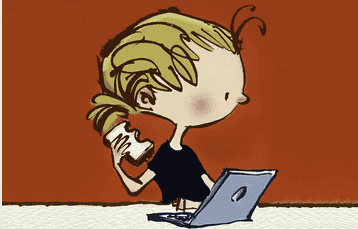How mastering the art of being alone can boost your mental health

We are finally getting to grips with why solitude is so important. Here’s how to use your alone time to get the biggest boost to your e
Toni Demuro
RECENTLY, I was walking alone on a quiet, winding trail. The path was hard to follow and slick with snow. The sun felt warm on my face. As I trudged uphill, I missed my partner, but felt grateful to be visiting my sister who I don’t see often.
I was on my own for a couple of hours that day. During that time, I felt wide-ranging emotions, including curiosity, anxiety and joy. It was a welcome period of solitude and I returned to civilisation feeling calmer and more clear-headed than when I had set out.
Read more
The mindfulness revolution: A clear-headed look at the evidence
Think about the last time you were alone. Maybe you were commuting to work or had woken up before the rest of your household. Perhaps you live alone. Did you revel in that period of solitude, long to connect with another person or let it pass by without much thought?
Solitude is inevitable. Adults in the UK and US spend around one-third of their waking lives alone and that increases as we get older. In many places, we live alone in greater proportions than ever before. A recent survey of 75 countries shows that 17 of them have more than 25 per cent solo households.
As social creatures, research has historically pointed us away from time alone. But recently, more people are spending time away from the crowd, and even seem to crave it. Now, we have evidence as to why alone time can feel so good and may in fact be vital to your health and well-being. Moreover, we have…
discovered the best ways to be alone – learn these secrets and you could grasp the real power of solitude.
Isolation is not solitude
Researchers have been cataloguing the negative aspects of feeling alone, including loneliness, social isolation, anxiety and ostracism, for over a century. From that body of work, we know that isolation – which is often wrongly conflated with solitude – is harmful. We see this clearly in studies of the solitary confinement of prisoners, which show that being alone in these conditions increases the long-term risk of cardiovascular disease and mental health problems.
Recently, though, researchers have begun to re-examine time spent alone in less extreme circumstances. In Solitude: The science and power of being alone, a book I co-wrote with researchers Netta Weinstein at the University of Reading and Thuy-vy Nguyen at Durham University, both in the UK, we set out to understand how everyday solitude affects people’s lives. Together, we wanted to know whether these moments are beneficial, and possibly essential to living a balanced, happy life.
What is solitude?
In the largest study of its kind, thousands of participants from the UK aged between 13 and 85 told us their solitude stories through online surveys. From that data, we were able to more clearly define solitude and its requirements, then begin to sort out who feels good in solitude and why.
In that and other studies we ran, we learned that everyone has a unique definition of what solitude looks like in their lives, but there are commonalities across age, ethnicity and gender.
What is solitude? For some participants, the word “solitude” conjured visions of a monk in a mountaintop monastery or a determined hiker alone in the wilderness. Most people described less lofty but equally consequential experiences of solitude achieved while, for example, cooking a meal, walking in a park or writing in a journal.
Surprisingly, our participants described solitude as having a psychological distance from others, but not necessarily a physical one. That means they could be sitting in a room with a trusted loved one or even on a city bus and still reap some benefits of time alone – as long as they could truly have independent thoughts. Being free of others’ expectations and input is one aspect of solitude that makes it so relaxing for many people.
Stress-busting effects of being alone
In several separate experiments, Nguyen and her colleagues focused on some of these apparent stress-busting effects of solitude. They found that when people spend 15 minutes alone, there is a “deactivation effect”, meaning “high arousal” emotions (both positive and negative) like excitement and anxiety are decreased, while positive “low arousal” feelings like calmness are increased. This wasn’t seen when people spent 15 minutes with another person.
One caveat is that sometimes solitude also increases the negative low arousal feeling of loneliness. However, a further experiment showed that this increase in loneliness could be diminished when individuals chose to think about positive thoughts or when they were given a choice whether to spend time alone. The researchers also found that when participants partook in 15 minutes of solitude each day for a week, the beneficial effects on stress spilled over into the following week.
Revealed: What your thoughts look like and how they compare to others’
Revealed: What your thoughts look like and how they compare to others’
We finally have a grasp on the many different ways of thinking and how your inner mindscape affects your experience of reality
Together, these studies indicated to us that, done correctly, people can use solitude to regulate their underlying emotions. A small amount of solitude allowed them to become quiet after excitement, calm after being angry, or peaceful when they desired.
The best way to experience solitude
The list of benefits doesn’t end there, though. Through our own work and that of others, Weinstein, Nguyen and I have seen that alone time can foster well-being through self-discovery and feelings of inner peace, competence and self-reliance. Early research suggests that it may even enhance creativity – although this depends on exactly why a person is withdrawing from society. Several studies link time alone and creativity, but only when people avoided social interactions by choice, because of what is known as a “non-fearful” preference for solitude. It is thought that anxiety-free time spent in solitude may allow for and foster creative thinking. On the other hand, there was no such link in those who withdrew because of shyness, in which a fear or anxiety prevented them from interacting with others, or because of avoidance, where people disliked social interactions.
INDIA. Mumbai. Overcrowded local trains connecting Mumbai with its suburbs.
Psychological alone time is possible, even when you are in a crowd
© RAGHU RAI/MAGNUM PHOTOS
Our own experiments hint that chosen solitude may even fulfil some of the same needs as our social relationships do. This gels with some of Weinstein’s latest research, carried out with Mark Adams, also at the University of Reading, which shows that solitude contributes to a feeling of emotional well-being by nurturing three fundamental needs: feeling connected to others, feeling competent and feeling that you have autonomy. While those needs are generally experienced during social interactions, Weinstein and Adams’s work suggests that solitude can also help achieve something similar.
“We saw that on days when people spent more time alone, they got more of that sense of, ‘Yeah, I can be myself today, I have a say in what happens, I can do things that matter to me and that I choose, and I feel less pressure’,” says Weinstein. Notably, the researchers also found that even in the absence of social interaction, individuals still experienced a meaningful sense of connection to others.
Loneliness epidemic
Of course, some people can feel loneliness as a consequence of being alone. Glance at the news nowadays and you will see headlines reporting a “loneliness epidemic”. However, most of the time, loneliness is erroneously linked with solitude. The confusion is easy to understand, says Weinstein. After all, “loneliness and solitude share a word in most of the world’s languages, so in those cases, we can’t talk about them as separate”, she says. “But when we conflate the two, we not only do injustice to solitude, but also to loneliness.”
Scientists tend to define loneliness as a hurtful discrepancy between what we want from social relationships and what we are actually getting. That means we can be lonely in a stadium filled with people or while sitting next to a partner if we don’t feel connected to them. It is also common. “To be human in the modern world is to feel occasional bursts of loneliness,” says Eric Klinenberg at New York University, who researches living alone and social isolation.
Feeling lonely from time to time is evolutionary and adaptive. It is a cognitive alarm reminding us to connect to others for the sake of survival. Nowadays, we don’t need our neighbour’s help to catch dinner or ward off a predator, yet our brain still signals that we do. That kind of transient loneliness is benign, but if it becomes chronic, loneliness can have severe consequences. A recent analysis of 90 studies looking at more than 2 million adults aged 18 years or older linked chronic loneliness with a 14 per cent higher risk of dying early and social isolation with a 32 per cent increase.
Read more
Why fully remote workplaces mean more loneliness – and more sick days
Late last year, the World Health Organization launched a Commission on Social Connection to “address loneliness as a pressing health threat”. That came on the heels of an advisory issued by the US surgeon general, Vivek Murthy. The 82-page document, Our Epidemic of Loneliness and Isolation, calls attention to the “public health crisis of loneliness, isolation and lack of connection” in the US.
However, a major problem with such advisories is that most of our existing evidence base is skewed by studies that conflate subjective loneliness with objective measures such as living alone. “When we [conflate solitude and loneliness], what are we not seeing and what kinds of opportunities are we missing out on?” says Weinstein. “That’s where the research on solitude is really helpful.”
Ideally, there would be a formula for how much time humans need to spend with and without others to maximise our chances of health and happiness. But emerging research indicates there is probably no one-size-fits-all answer.
How much time should you spend alone?
A recent study by Weinstein, Nguyen and their colleagues explored the link between daily solitude and social time, finding no optimal balance. People were lonelier and less satisfied on days when they spent more hours in solitude, but it didn’t accumulate across days – those who were generally alone more weren’t, on average, lonelier. And this link reduced or disappeared entirely when the participants’ solitude was chosen. On days when people chose to spend more time alone, they also felt less stressed and had greater autonomy. These benefits were cumulative: individuals who spent more time alone across the three weeks studied were less stressed and more satisfied overall. “There’s no single answer for what is the ‘right’ amount of socialising or solitude, it’ll be different for each of us,” says Weinstein.
However, while there may not be a magic number, one recent study of 438 adults aged between 24 and 90 indicates that there may be a tipping point for when alone time shifts to loneliness. Spending more than 75 per cent of your time alone was associated with greater loneliness.
On the other end of the spectrum is “aloneliness”, a term coined by Robert Coplan at Carleton University in Ottawa, Canada, and his colleagues to describe the feeling solitude-seekers have when thwarted from time alone. “I was very surprised that there wasn’t a word that reflected the experience of feeling cranky, grumpy, upset or having other negative emotions as a function of feeling like you were not getting enough time alone,” he says. (Coplan is currently floating terms amongst his peers for someone who enjoys being alone – so far, “soloist” is in the lead.)
G25MGF A young woman is sitting on a hill damaged by wild fires at sunrise
Withdrawing into chosen solitude can help you regulate emotions
lolostock/Alamy
Aloneliness siren
Some people may hear an aloneliness siren similar to the evolutionary loneliness alarm, but may not know what it means, says Virginia Thomas, a psychologist at Middlebury College in Vermont. “One of the skills I teach is to listen to your own internal signals saying you need to be alone.” When you can’t think straight or feel depleted, those are signs you are overstimulated. “An antidote to this is to withdraw into solitude as a way to get regulated again,” says Thomas. Once someone lands on the right mix for them, they then “have to work strategically to get that balance met”, she says.
So far, we have learned that being alone tends to be positive, as long as you have chosen to do so, are motivated to be alone and have balanced that time with social interactions. But once you have scheduled some time for solitude, what should you do while you are there? Do you need to zone out watching Netflix or go for a hike?
What to do while alone
The simple answer is that it doesn’t matter what you do as much as how and why you are doing it. In studies, people experienced the deactivation effect even while reading a book alone. Similar results were seen in an experiment by Dwight Tse at the University of Strathclyde in Glasgow, UK, and his colleagues. In their study, 283 participants were randomly alerted via an app six or seven times a day, at which point they answered a short survey about their momentary thoughts, feelings and behaviour. Tse’s team found that what you do in moments of solitude doesn’t matter so much as having choice over the activity. Chosen activities had little effect on the benefits of solitude, whereas unchosen solitary activities appeared relatively harmful to the person’s well-being.
If you aren’t sure what works best for you, you could try using a technique that Weinstein calls “crafting solitude”. This is an intervention that she and Adams outlined in a recent paper. It is designed to mould an individual’s relationship with solitude by challenging negative assumptions and guiding them through meaningful solitary activities. Across two studies, this type of guided solitude resulted in less stress and anxiety in participants and more relaxation compared with a group who hadn’t used the technique. “Engaging in solitude as a place where opportunities can be pursued benefited their sense of well-being,” says Weinstein.
Ultimately, though, you may still dislike being alone. But if you weren’t “born to solitude”, we have a secret weapon for you: curiosity. We have found from our research that individuals who approach solitude with a curiosity as to what being alone might help them achieve were able to alleviate any discomfort they felt during difficult moments of solitude.
Now think about the next time you will be on your own. Will you revel, suffer or fail to notice it? As evidence mounts for how time alone can be a positive force in shaping our lives, my colleagues and I recommend planning for it – and protecting it.
Heather Hansen is a journalist and author based in Boulder, Colorado


